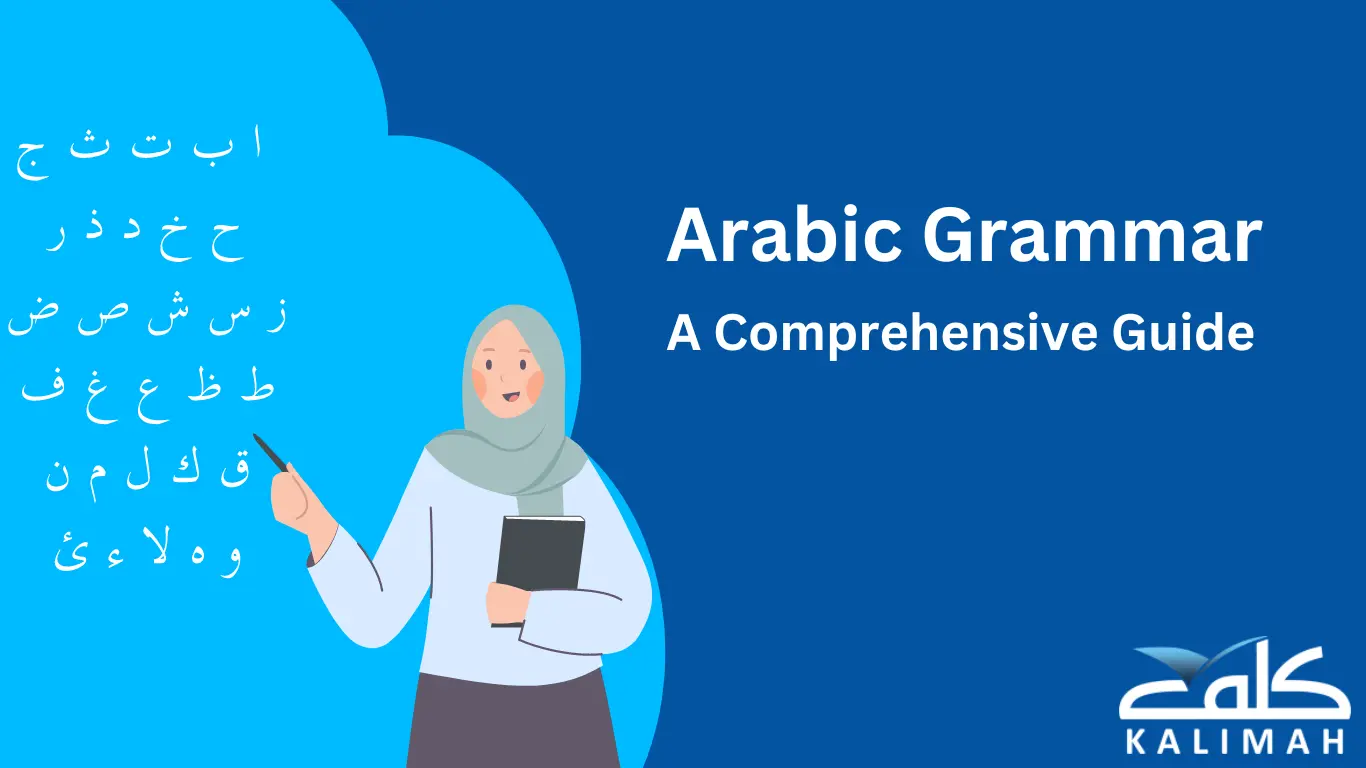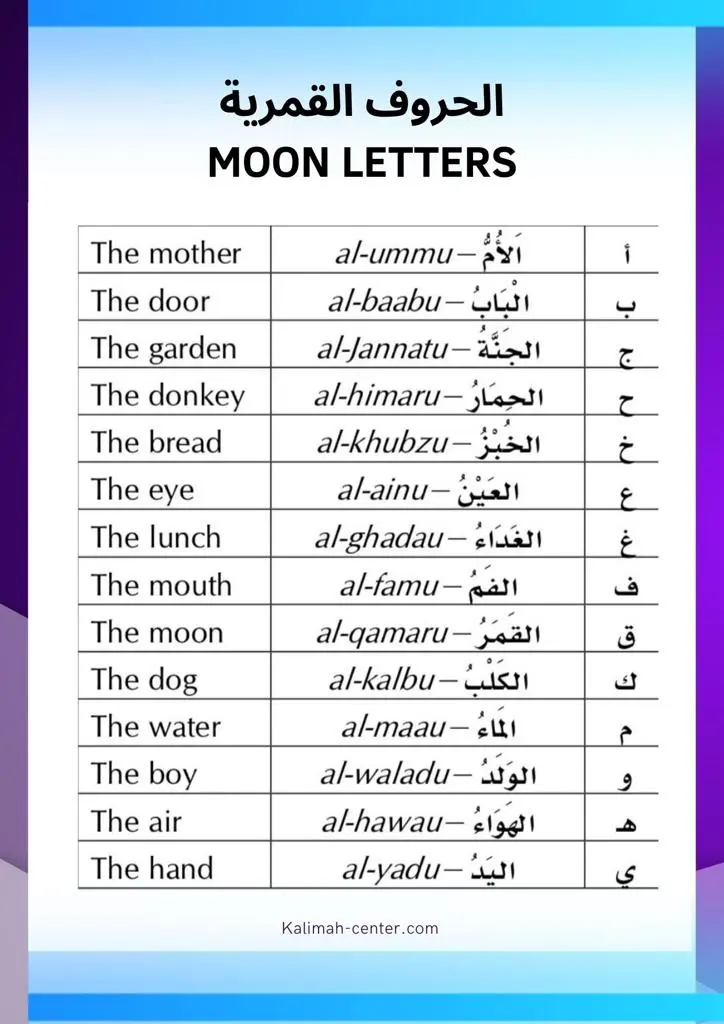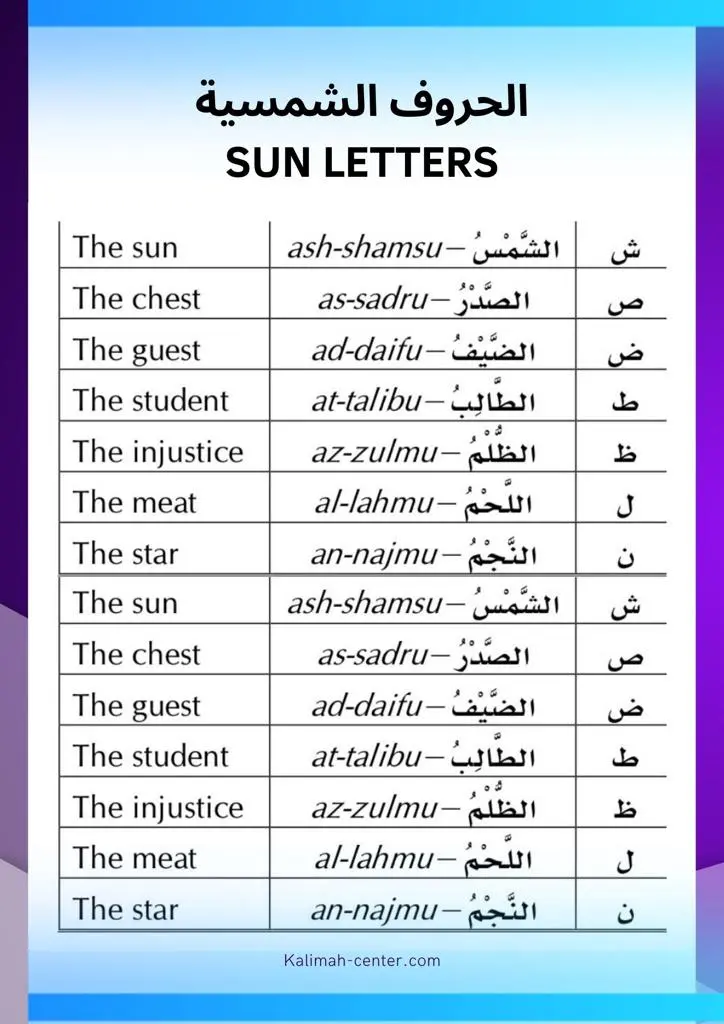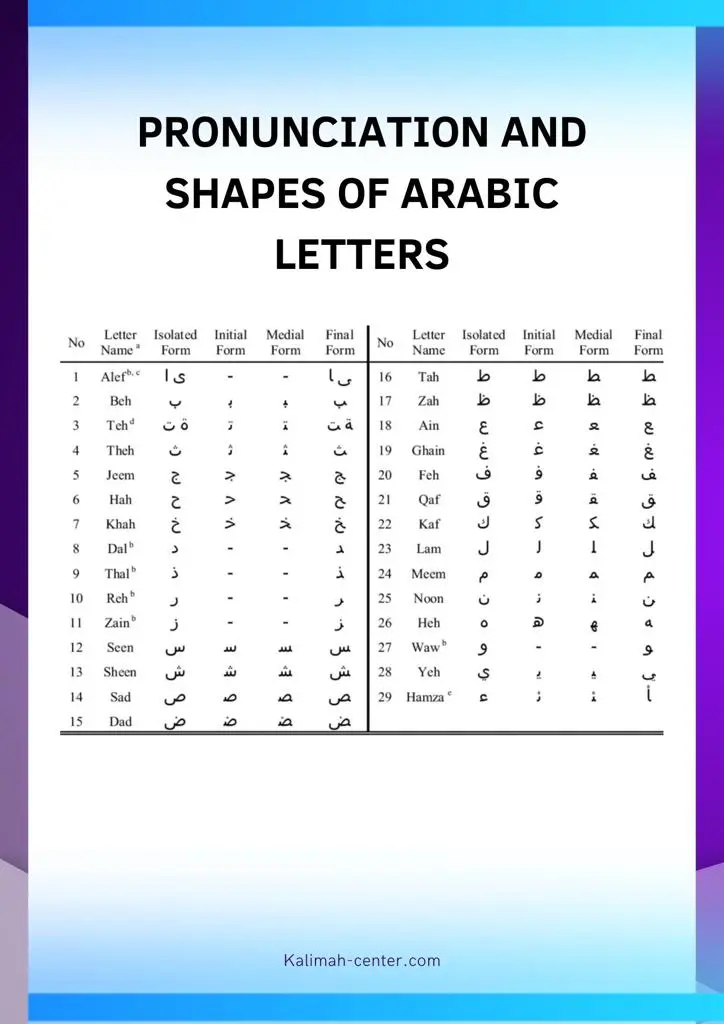The Arabic language is one of the oldest living languages, dating back more than 1000 years, it is also one of the 6 official languages of the United Nations. With over 420 million speakers around the globe, Arabic is considered the fifth most spoken language in the world.
The complexity and uniqueness of the Arabic language render it challenging to learn Arabic grammar especially if you are a non-native speaker.
This comprehensive Arabic grammar guide will shed some light on the most important Arabic grammar rules, helping you to learn Arabic grammar online from the comfort of your own home and with the least possible effort.
Why Learn Arabic Grammar Online?
Learning Arabic grammar is now easier than ever before thanks to modern technology and the availability of online Arabic teaching platforms, learning Arabic grammar online is now considered a more convenient, efficient, and affordable choice for those aiming to hone their Arabic language skills.
Understanding the Arabic Alphabet
Arabic is a unique language that has its own set of rules different from other languages. Here are some important points to keep in mind before starting to learn Arabic Grammar.
- One of the most notable differences is that Arabic is read from right to left, which may take some time to adapt to if you’re used to reading left to right.
- Additionally, almost all the letters in an Arabic word are joined together, giving the script a handwritten aesthetic. However, some letters cannot join due to their shape, but they will be seen as they come.
- Another interesting feature of the Arabic language is there is no distinction between capital and small letters.
- Arabic is all written in a cursive style, whether it is printed or handwritten.
- Moreover, all the letters in the Arabic alphabet are consonants, and arabic vowels are separate marks that are placed on top or underneath these letters. This unique system helps to convey the correct pronunciation of words.
here’s a full Guide about the Arabic alphabet
Characteristics of Arabic Letters: Sun and Moon Letters
The Arabic language is composed of 28 letters, 14 of which are known as the Sun Letters (الحروف الشمسية), and the other 14 are called the Moon Letters (الحروف القمرية).
The Sun Letters include letter forms such as (ش), while the Moon Letters include letter forms such as (ق).
here’s a Full Guide to Sun and Moon Letters
How to Pronounce Moon Letters?
When dealing with the Moon Letters, the pronunciation of the letter lam (ل) of “al” is pronounced in a noun, such as in the word “al-qamaru'” (the moon).
How to Pronounce Sun Letters?
As for the Sun Letters, the Lam of “al” -” ال “ is assimilated to the first letter of the noun, such as in the word “ash-shamsu” – الشمس (the sun). This assimilation is indicated by shadda (ّ) on the first letter of the noun. A table displaying the Moon Letters and the Sun Letters is provided below.
Pronunciation of Arabic Letters
Before proceeding with learning Arabic words, it is advisable to master the pronunciation of each of the 28 Arabic letters separately, note that some of the sounds of the Arabic letters are not present in any other language.
In addition to that the Arabic language contains what is known as “Harakat” or diacritics which determine the sound of each letter. The table below demonstrates the shapes and sounds of the Arabic alphabet.
Arabic Nouns
A noun is a word that can convey its meaning without the assistance of another word. Nouns are used to name people, places, things, ideas, and more.
read in detail about Noun In Arabic: Definition, Types And Examples
Concept of Gender in Arabic Nouns
The Arabic language has 2 genders, feminine and masculine. Most nouns are considered masculine unless they have a feminine ending.
The most common feminine ending is the تاء مَرْبُوطَة , ة taa’ marbuta form, which is added to masculine nouns and adjectives to make them feminine. There are also less common feminine forms, such as ألِف مَقْصُورَة , ى alif maqsoura and ألِف هَمْزَة , اء alif hamza.
Certain words are considered feminine by convention, such as geographical names, body parts that occur in pairs, and some other nouns. However, there are a few words that can be either feminine or masculine.
Singular, Dual, and Plural Forms in Arabic
In the Arabic language, nouns are categorized based on their numbers into three main groups. These groups are as follows:
-
Singular Noun (المفرد)
The Singular Noun (المفرد) is a noun in Arabic that represents only one item, whether it is a person, an animal, a place, or an ordinary item. Singular nouns can be either masculine or feminine and are identified by the absence of any attachment in the case of masculine items, and by the ending with a taa marbouta (ة) in the case of feminine nouns.
-
Dual Noun (المثنى)
The Dual Noun (المثنى) is a noun in Arabic that represents only two items. Any item less or more than two is not considered dual anymore and will be either singular or plural. Dual nouns can be found in both masculine and feminine forms, and are identified by the addition of dual alif and nun (ا، ن) to the end of the singular noun.
-
Plural Noun (الجمع)
The Plural Noun (الجمع) is a noun in Arabic that represents more than two items. In Arabic, any number greater than two is considered plural. Plural nouns can be formed by adding waw and nun (و، ن) to masculine nouns, and alif and taa (ا، ت) to feminine nouns.
Case Endings in Arabic: Nominative, Accusative, and Genitive
In Arabic, case endings, also known as حركات Harakat, are small markings that are added to the end of words to indicate their grammatical function in a sentence.
For instance, if a word is the subject of a sentence, a case ending is attached to indicate that. Similarly, if a word is the object of a verb, a different case ending is used to indicate that.
Using case endings correctly requires a thorough understanding of Arabic grammar. If you are a native English speaker who has not studied a language with a case system such as Latin or Russian, it may take some time to get used to it.
Case endings are not usually written, except in the Quran and children’s books. However, you will hear them pronounced by newscasters, and if you want to speak Fusha fluently, it’s a good idea to have a solid understanding of the case system.
There are three case markers, each corresponding to one of the three cases:
- nominative (مرفوع marfoua’)
- genitive (مجرور majrour)
- accusative (منصوب mansoub)
These markers are pronounced as short vowels. Here are the three case markers:
Read More: THE COMPLETE MASTERY GUIDE TO SUKOON IN ARABIC
Arabic Verbs
Verbs are used to convey the action in a sentence. Every sentence needs to have a verb in it. In Arabic grammar, verbs need to be conjugated according to the gender and plurality of the person performing the action.
There are three tenses for Arabic verbs:
- The مضارع (imperfect), refers to the present and future tenses.
- The ماضي (perfect), which denotes the past tense.
- The أمر (imperative), is used to give an active command.
Introduction to Arabic Verbs: Past, Present, and Imperative
This is a description of the three tenses in Arabic grammar.
-
The past tense
The first tense is the perfect tense or Madi, which is used to describe an action that has been completed, such as “he did – فعل” “he wrote – كتب”, or “he entered – دخل”.
-
The present tense
The second tense is the imperfect tense or Madari (مضارع), which is used when an action is not completed, such as “he is doing – يفعل” or “he will enter – سيدخل”.
-
The imperative form
Lastly, the imperative tense (Amr) is used to signify a command, request, or supplication, such as “do – افعل”, “write – اكتب” or “enter – ادخل”.
Concept of Root Letters in Arabic Verbs
Arabic is a fascinating language that operates on a system of ‘roots’. Unlike English where the root of a word refers to its origin, in Arabic, the root or “masdar” refers to the fundamental meaning of a word. This core meaning is usually composed of three consonants (non-vowels) that can be identified in the word.
For example, the sequence of the 3 consonants, ( س، ف، ر ), carries the meaning of ‘travel’. If a word includes the sequence of letters (س/ ف / ر ) or (s, f, r) it is likely to have something to do with traveling. This is considered one of the unique features of the Arabic language.
-
Words Having Doubled Root Letters
In Arabic, it is common for some words to share the same second and third root letters. When this happens, they may be written either together with a shadda or a doubling sign (ّ ) or separately, depending on the type of word. For instance, the word “tajdid” which means “new” is made up of the root letters ( ج – د – د ), ( j/d/d ).
-
Words Having Four Root Letters
In Arabic, it is common for some words to have four root letters. These root letters can either be four distinct letters or a repeated pair. For instance, the word for “translation” is “tarjama”, which has the root letters (ت – ر – ج – م ) or t/r/j/m.
On the other hand, the word for “earthquake” is “zalzal”, which has the root letters (ز – ل – ز – ل ) or z/ L / z / L and includes a repeated pair.
-
Words with a foreign origin
Generally, foreign words do not follow the root system of the Arabic language such as:
- Internet – إنترنت
- Radio – راديو
Arabic Adjectives
Arabic adjectives are used to describe nouns. Here’s a brief overview of the rules of using adjectives in four simple points.
- Firstly, the adjective always comes after the noun.
- Secondly, if the noun is definite, you must add the prefix “al-” to the beginning. Any adjectives following the noun must also include this definite prefix.
- Thirdly, according to Arabic adjective agreement, nouns that are dual or plural require adjectives that are also in the dual or plural form.
- Finally, masculine nouns require masculine adjectives, while feminine nouns require feminine adjectives.
Arabic Prepositions
In Arabic, the set of words used to indicate the relationship between other words are called “huruf aljari” or prepositions. Their function is to clarify the position or location of an object or action in relation to another.
For instance, when we say “the book is on the table – الكتاب على الطاولة”.
Similarly, when we say “The book is in my bag – الكتاب في حقيبتي”.
It is worth noting that the pronunciation of prepositions does not change, regardless of their position in a sentence. This is because they are considered “Mabni” words.
Furthermore, any word that follows a preposition ends with a Kasrah. Below are some of the Arabic prepositions:
مِنْ – إلَى – عَنْ – عَلَى، فِي – الباء – اللام – الكاف – الواو (واو القَسَم) – والتاء (تاء القَسَم) – مُذْ – مُنْذُ – رُبَّ – حَتَّى – وخَلَا – وَعَدَا – حاشَا – كَيْ – مَتَى – لَعَلَّ.
Common Arabic Prepositions and Their Usage
Some of the most commonly used Arabic prepositions are
مِنْ – إلَى – عَنْ – عَلَى – فِي – الباء – اللام – الكاف.
read more about Mastering The Arabic Prepositions: From Basics To Nuances
Sentence Structure in Arabic
In the Arabic language, there are two main types of sentences:
- The nominal sentence
The nominal sentence, also known as “Esmiya”, begins with a noun, such as “the book is new” – الكتاب جديد.
- The verbal sentence
also known as “Fi’liyah”, begins with a verb, such as “Hamid went out – خرج خالد”.
It is important to understand the distinction between these two types of sentences in order to properly construct and understand sentences in Arabic.
Difference Between Nominal and Verbal Sentences
The main difference between nominal and verbal sentences in Arabic grammar is that the structure of a nominal sentence involves the subject of the sentence being the main topic, whereas, in a verbal sentence, the subject of the sentence is the action being carried out by the verb.
Examples of Nominal Sentences
Below are some examples of nominal sentences:
- هذا مقال رائع – This is a great article
- الولد يلعب – The boy is playing
- نحن في مصر – We are in Egypt
Examples of Verbal Sentences
Below are some examples of verbal sentences:
- ذهب الطبيب إلى المستشفي
- The doctor went to the hospital.
- تعلم محمد الدرس
- Mohammed learned the lesson
- يصلي أبي في المسجد
- My father prays in the mosque
Arabic Pronouns
In the Arabic language, a pronoun is a word that can replace a noun.
Arabic Subject, Object, and Genitive Pronouns
Arabic has three distinct types of overt or prominent pronouns, namely subject pronouns, object pronouns, and genitive pronouns.
- Subject pronouns act as the doer or subject of the verb, and they can appear separately or attached.
- Object pronouns, on the other hand, serve as the object of the verb and are always attached.
- Lastly, genitive pronouns serve as the object of the preposition or the object of the noun (possessive) to which they are attached.
Arabic Demonstrative Pronouns
Arabic Demonstrative pronouns, are words like “this – هذا – هذه” and “that – ذلك”, unlike many other languages they are classified into ( proximal and distal demonstrative pronouns), they also differ according to femininity or masculinity and whether they are single, dual or plural.
Relative Pronouns in Arabic
The pronouns ‘that, which, who, whom’ are represented by relative pronouns such as الذي، التي، اللذان، اللتان، الذين, etc. These pronouns are utilized as conjunctions that connect nouns or pronouns and verbs to other nouns or verbs.
What are Attached and Detached Pronouns in Arabic Grammar?
There are two types of pronouns:
- Detached Pronouns, which are used separately from the noun they replace, such as ‘he’ in the sentence ‘He is a student’- هو طالب.
- Attached Pronouns, which are attached to the noun they replace, such as ‘his’ in the sentence ‘His book’- كتابهُ.
Common Arabic Grammar Errors Made by Beginners and How to Avoid Them
Learning Arabic grammar can be challenging for beginners. Here are some common Arabic grammar errors to avoid.
Placing verbs after nouns
In Arabic sentences, the verb is typically placed at the beginning of the sentence. For example, the sentence “Ibrahim goes to the market – يذهب إبراهيم إلى السوق”, with the verb “dahaba” placed at the beginning of the sentence.
It is important to note that this is not a marker of a question in Arabic, unlike in English and some other European languages.
Faulty pronunciation of Arabic letters
It is important to pay close attention to pronunciation when communicating in Arabic, as there are certain sounds in the language that do not exist in English.
One such sound is the “qaf” sound, which is produced from the back of the throat. If one does not pay attention to the correct pronunciation of these sounds, it can hinder effective communication in Arabic.
Therefore, it is essential to practice and perfect the proper pronunciation of Arabic sounds to ensure clear and effective communication.
Effective Strategies for Learning and Remembering Arabic Grammar Rules
1- Set your Arabic grammar learning goals
It is crucial to establish achievable goals for yourself. Without a goal, you may feel lost and unsure of where to begin or how to proceed.
However, it is even more detrimental to set unattainable goals. It is important to set goals that align with your abilities and schedule. For instance, setting a goal to memorize 3000 new words every day is unrealistic and impossible to achieve.
Pursuing unachievable goals can lead to disappointment and discouragement, which is something to avoid.
2- Be consistent!
Consistency is key when trying to improve your Arabic language skills and reach your goals. It’s important to practice every single day and not skip a day of studying, or else you’ll find yourself starting over again.
However, this doesn’t mean that you need to dedicate your entire day to learning Arabic – just 10 minutes or half an hour of practice is sufficient. It’s essential to set achievable goals for yourself, so don’t push yourself too hard.
When you make a habit of studying Arabic daily, your mind will become more familiar with the language, which will make it easier for you to learn at a faster pace.
3- Join an Online Arabic Grammar course
When you are starting out on your learning journey, having a clear set of organized steps to follow is crucial, and the best way to achieve this is through taking online Arabic grammar courses.
Online Arabic Courses offer a structured approach to learning, with each one providing its own unique framework and methodology for teaching.
A qualified online Arabic teacher can help you achieve your learning goals by providing you with the necessary study materials, organizing your study, and correcting your mistakes; which will help you save time and effort in your Arabic learning journey.
Resources for Practicing Arabic Grammar
In addition to the previously mentioned tips and tricks for mastering Arabic grammar, here are some online resources that may help you improve your Arabic skills.
Al-Jazeera, a news outlet based in Qatar, has launched a tool for learning the Arabic language.
An advanced flashcard tool that allows for interactivity through the use of various multimedia such as text, audio, video, and images. This program also offers the ability to monitor your progress and track how well you are retaining information across different flashcards. Additionally, you can create multiple decks of flashcards to organize your study materials efficiently.
Improve your Arabic language skills through up-to-date Arabic news.
To Sum Up!
In order to learn Arabic grammar, you need to show a big deal of commitment and dedication.
Remember! It is crucial to start with learning the basics of Arabic grammar rules formerly discussed in this guide before proceeding with your Arabic study.
It is also recommended to seek the help of a professional native Arabic tutor to guide you through your study journey.
Learn Arabic Grammar Online with Kalimah!
Kalimah platform provides you with an opportunity to learn Arabic Grammar online with the help of Qualified native Arab teachers and from the comfort of your home. Start your journey to Arabic language fluency and reserve your spot today in Kalimah online Arabic course.
Ready to deepen your connection with the Quran and enhance your understanding of Arabic? Join Kalimah Center today and embark on a transformative journey of learning and growth! Our professional, handpicked Online Arabic and Quran Tutors are dedicated to helping you master these essential skills with ease and expertise.
📚 Explore Our Courses:
Online Arabic Course: Tailored to your level, our comprehensive Arabic program includes 16 teaching levels and 400+ hours of personalized sessions.
Online Arabic Course For Kids: Nurture your child’s love for Arabic with our engaging and structured program, available in 24 levels for primary, intermediate, and secondary stages.
💡 Why Choose Kalimah?
Expert Tutors: Learn from native Arabic speakers and Ijazah-certified teachers who prioritize your progress.
Flexible Learning: Enjoy one-on-one classes, 24/7 access to materials, and interactive exercises for a dynamic learning experience.
Comfortable Environment: Benefit from a supportive and encouraging atmosphere, where mistakes are seen as opportunities for growth.
Proven Success: With over 8,000 students worldwide and glowing testimonials, Kalimah Center is your trusted partner in Arabic and Quran education.
🚀 Start Your Free Trial Today! 🚀
Don’t miss out on this life-changing opportunity to deepen your faith and knowledge. Sign up now for your free trial and take the first step towards becoming a better practicing Muslim with Kalimah Center!



















